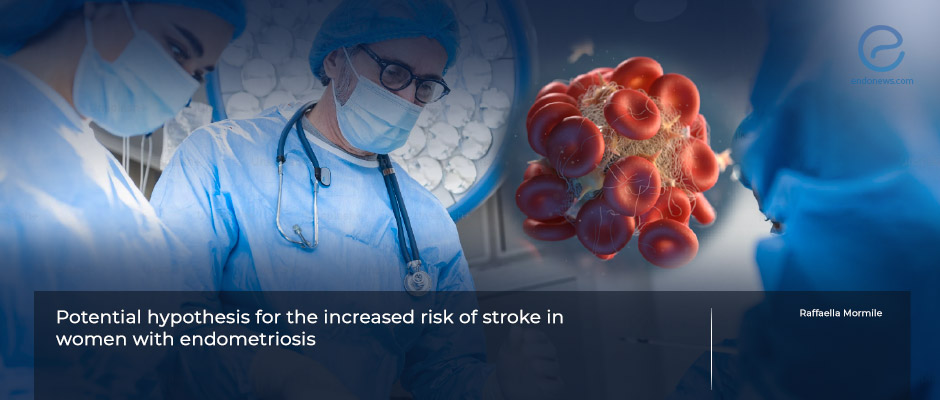Why is there a higher risk of stroke for women with endometriosis?
Jan 25, 2024
Certain biomolecules are potential culprits in elevating stroke risk for women with endometriosis
Key Points
Highlight
- The Tissue Factor (TF) and microRNA-126 (miR-126) are implicated in increasing the stroke risk among women with endometriosis, particularly after surgery, due to their thrombogenic effects.
Importance
- It is crucial to recognize the increased susceptibility to stroke in women with endometriosis.
- Owing to its inflammatory properties, endometriosis causes certain thrombogenic biomolecules to be activated and elevates the risk of thrombotic events.
What’s done here
- This is an editorial by Dr Mormile from Italy explaining his hypothesis as to why endometriosis patients are at a higher risk of developing a stroke.
- He focuses on understanding the role of TF and miR-126 as key players and sheds light on preventative measures.
Outline
- Hysterectomy/oophorectomy contributes to the increased risk of stroke in women with endometriosis.
- The TF expression from monocytes is increased after surgery, predisposing endometriosis patients to strokes.
- The levels of PAR2, the signaling receptor of TF, are also increased.
- miR-126 expression is downregulated in women with endometriosis.
- The inflammatory environment causes the thrombogenic pathway to be activated.
Lay Summary
Women diagnosed with endometriosis might face an increased susceptibility to stroke due to alterations in the levels of some molecules in their systems. Studies indicate that especially those undergoing hysterectomy/oophorectomy, have an approximately 30% higher risk of stroke.
Dr. Mormile from Italy wrote an editorial hypothesizing that certain biomolecules may be playing a part in increasing the susceptibility to stroke in women with endometriosis. It was published in the January 2024 issue of the journal European Journal of Obstetrics & Gynecology and Reproductive Biology.
Dr. Mormile stated that surgical procedures trigger an inflammatory response, elevating the Tissue Factor (TF) expression in monocytes. TF is a crucial component in blood clotting and increased TF levels have been associated with a higher predisposition to thrombotic events. Additionally, microRNAs (miRNAs) like miR-126 have emerged as important factors in vascular inflammation and TF biology. It has been shown that circulating miR-126 has antithrombotic properties by regulating TF expression. However, in women with endometriosis, miR-126 is downregulated, leading to increased TF expression and a higher risk of blood clotting events.
Furthermore, the abnormal expression and localization of TF, along with increased levels of its signaling receptor PAR2, play a strategic role in angiogenic and inflammatory signaling in endometriotic lesions. This suggests that the inflammatory environment in both ectopic and eutopic endometrium of women with endometriosis may contribute to the upregulation of TF and increase the risk of stroke.
The proposed hypothesis suggests that women with endometriosis may face an elevated risk of stroke due to the combined effects of TF upregulation and miR-126 downregulation, both associated with endometriosis. This risk could become more pronounced after surgical procedures, emphasizing the importance of informing patients about potential stroke risks. The author concludes by recommending clinicians to inform and monitor women with endometriosis for potential stroke risks and conduct further research to better understand the relationship between TF and miR-126 in stroke development among women with endometriosis.
Research Source: https://pubmed.ncbi.nlm.nih.gov/38044255/
endometriosis stroke tissue factor miR-126

